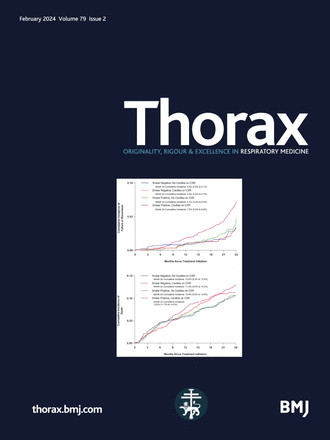Urban metabolic and airway immune profiles increase the risk of infections in early childhood
IF 9
1区 医学
Q1 RESPIRATORY SYSTEM
引用次数: 0
Abstract
Background Infections in childhood remain a leading global cause of child mortality and environmental exposures seem crucial. We investigated whether urbanicity at birth was associated with the risk of infections and explored underlying mechanisms. Methods Children (n=633) from the COPSAC2010 mother–child cohort were monitored daily with symptom diaries of infection episodes during the first 3 years and prospectively diagnosed with asthma until age 6 years. Rural and urban environments were based on the CORINE land cover database. Child airway immune profile was measured at age 4 weeks. Maternal and child metabolomics profiling were assessed at pregnancy week 24 and at birth, respectively. Results We observed a mean (SD) total number of infections of 16.3 (8.4) consisting mainly of upper respiratory infections until age 3 years. Urban versus rural living increased infection risk (17.1 (8.7) vs 15.2 (7.9), adjusted incidence rate ratio; 1.15 (1.05–1.26), p=0.002) and altered the child airway immune profile, which increased infection risk (principal component 1 (PC1): 1.03 (1.00–1.06), p=0.038 and PC2: 1.04 (1.01–1.07), p=0.022). Urban living also altered the maternal and child metabolomic profiles, which also increased infection risk. The association between urbanicity and infection risk was partly mediated through the maternal metabolomic and child airway immune profiles. Finally, urbanicity increased the risk of asthma by age 6 years, which was mediated through early infection load (pACME<0.001). Conclusion This study suggests urbanicity as an independent risk factor for early infections partly explained by changes in the early metabolic and immunological development with implications for later risk of asthma. Data are available upon reasonable request. Data will be available on request by email to nicklas.brustad@dbac.dk.城市代谢和气道免疫特征会增加幼儿期感染的风险
背景 儿童感染仍是全球儿童死亡的主要原因,而环境暴露似乎至关重要。我们研究了出生时的城市化程度是否与感染风险有关,并探讨了其潜在机制。方法 对 COPSAC2010 母婴队列中的儿童(n=633)进行监测,每天记录头 3 年感染发作的症状日记,并对 6 岁前的哮喘患者进行前瞻性诊断。农村和城市环境以 CORINE 土地覆盖数据库为基础。儿童气道免疫谱在4周大时进行测量。母亲和儿童的代谢组学特征分别在怀孕第 24 周和出生时进行评估。结果 我们观察到平均(标清)感染总数为 16.3(8.4)次,主要是 3 岁前的上呼吸道感染。城市与农村的生活方式增加了感染风险(17.1 (8.7) vs 15.2 (7.9),调整后的发病率比值;1.15 (1.05-1.26),p=0.002),并改变了儿童气道免疫特征,从而增加了感染风险(主成分 1 (PC1):1.03 (1.00-1.26) vs 15.2 (7.9),p=0.002):1.03(1.00-1.06),p=0.038;PC2:1.04(1.01-1.07),p=0.022)。城市生活也改变了母婴的代谢组学特征,这也增加了感染风险。城市化与感染风险之间的关联部分是通过母体代谢组学和儿童气道免疫特征介导的。最后,城市化增加了 6 岁儿童患哮喘的风险,而这种风险是通过早期感染负荷介导的(pACME<0.001)。结论 本研究表明,城市化是导致早期感染的一个独立风险因素,其部分原因是早期代谢和免疫学发展的变化,这对日后哮喘的风险有影响。如有合理要求,可提供数据。如需数据,请发送电子邮件至 nicklas.brustad@dbac.dk。
本文章由计算机程序翻译,如有差异,请以英文原文为准。
求助全文
约1分钟内获得全文
求助全文
来源期刊

Thorax
医学-呼吸系统
CiteScore
16.10
自引率
2.00%
发文量
197
审稿时长
1 months
期刊介绍:
Thorax stands as one of the premier respiratory medicine journals globally, featuring clinical and experimental research articles spanning respiratory medicine, pediatrics, immunology, pharmacology, pathology, and surgery. The journal's mission is to publish noteworthy advancements in scientific understanding that are poised to influence clinical practice significantly. This encompasses articles delving into basic and translational mechanisms applicable to clinical material, covering areas such as cell and molecular biology, genetics, epidemiology, and immunology.
 求助内容:
求助内容: 应助结果提醒方式:
应助结果提醒方式:


